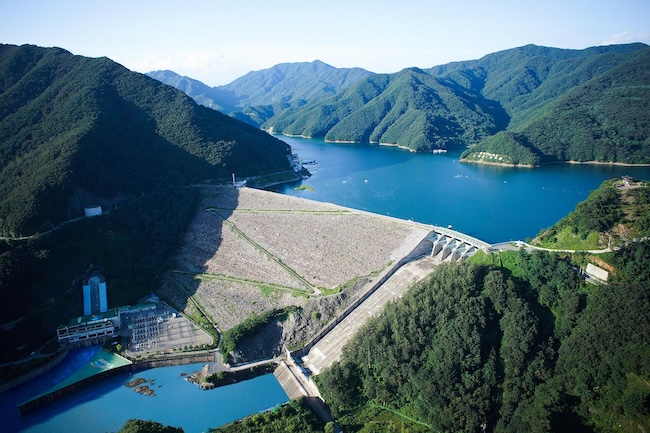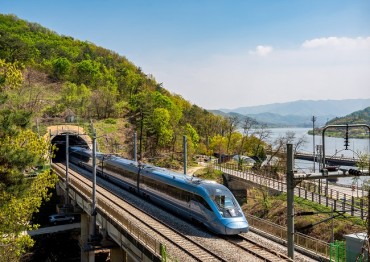
A ceremony commemorating the 50th anniversary of the completion of the Soyang River Dam, South Korea’s largest multipurpose dam, is set to take place on December 15 at the Soyang River Dam Citizen’s Forest in Chuncheon, Gangwon Province. (Image courtesy of K-Water)
SEOUL, Dec. 15 (Korea Bizwire) – A ceremony commemorating the 50th anniversary of the completion of the Soyang River Dam, South Korea’s largest multipurpose dam, is set to take place on December 15 at the Soyang River Dam Citizen’s Forest in Chuncheon, Gangwon Province.
Hosted jointly by the Ministry of Environment and Gangwon Province, the ceremony is expected to be attended by key figures including Minister of Environment Han Hwa-jin, Gangwon Province Governor Kim Jin-tae and about 300 local residents.
Completed on October 15, 1973, the Soyang River Dam is the country’s largest, standing 123 meters high and 530 meters long, with a total storage capacity of 2.9 billion tons. It’s a unique rockfill dam, constructed with rocks and gravel, capped with concrete only on the top surface. At the time of completion, it was the fourth-largest of its kind in the world and currently ranks fifth.
The dam supplies 1.2 billion tons of water annually for domestic and industrial use, while also generating 353 million kWh of electricity per year through hydropower.
Significantly, the Soyang River Dam has a flood control capacity of 500 million tons, acting as a last line of defense against flooding of the Han River.
According to the Korean Dam Society, during the great flood of 1984, the region received an average of 377mm of rain over two and a half days. However, the water level at Hangang Bridge only rose to a maximum of 11.03 meters, thanks to the Soyang River Dam, along with the Hwacheon Dam and the under-construction Chungju Dam. Without these dams, the water level at Hangang Bridge was estimated to rise above 12.50 meters.
In the September 1990 flood, the dam demonstrated its flood defense capabilities. While the maximum flood flow exceeded 10,000 tons per second, the Soyang River Dam released only up to 5,676 tons per second, preventing downstream damage by keeping the water level just 1 cm below the planned flood level of 179.99 meters.
In response to extreme rainfall due to climate crises, the Ministry of Environment is pushing forward plans to construct or remodel 10 dams.
As the Soyang River Dam reaches 50 years since its construction and considering its nature as a rockfill dam, which poses a greater risk of collapse than concrete dams in the event of overtopping, there is growing interest in whether it will be targeted for remodeling.
M. H. Lee (mhlee@koreabizwire.com)






